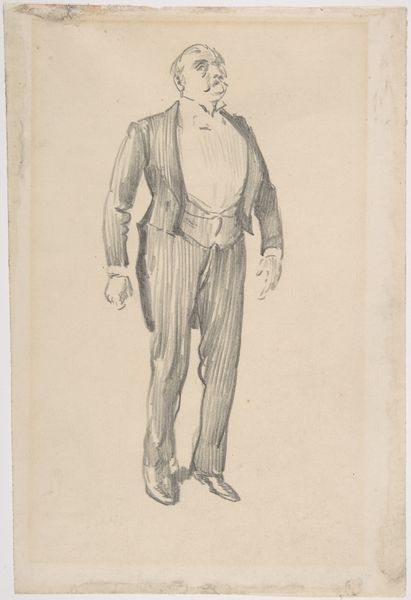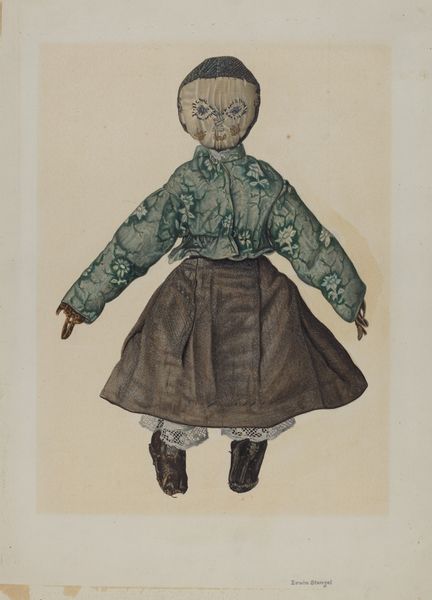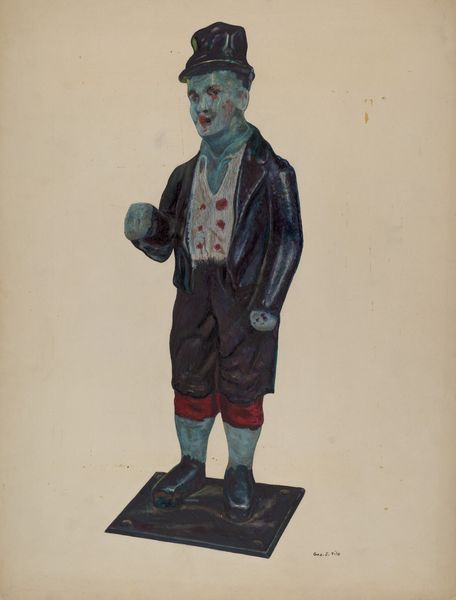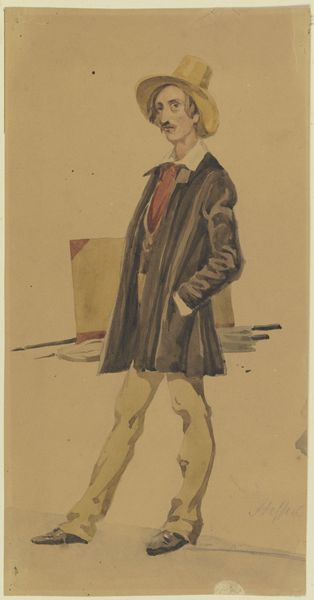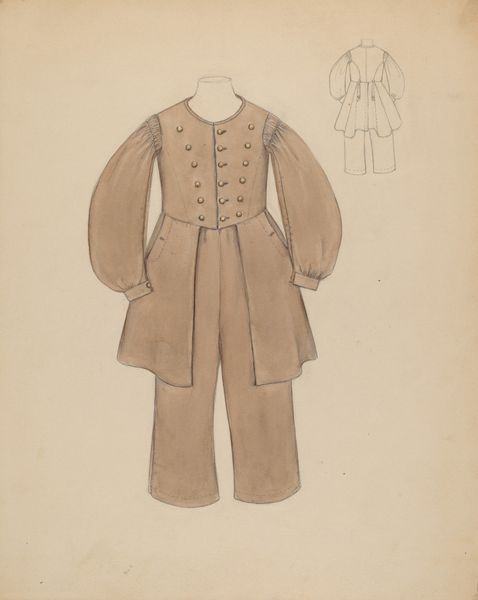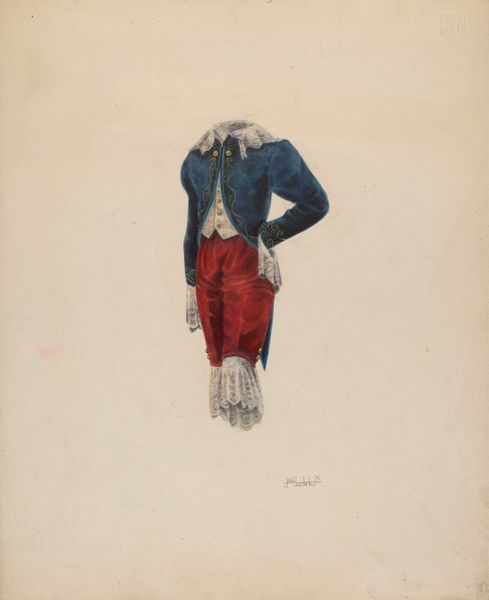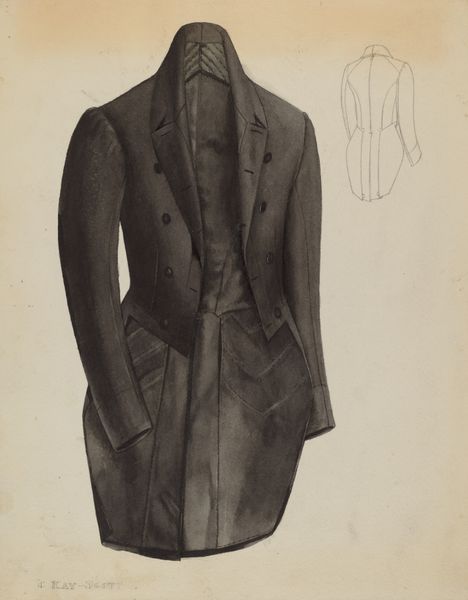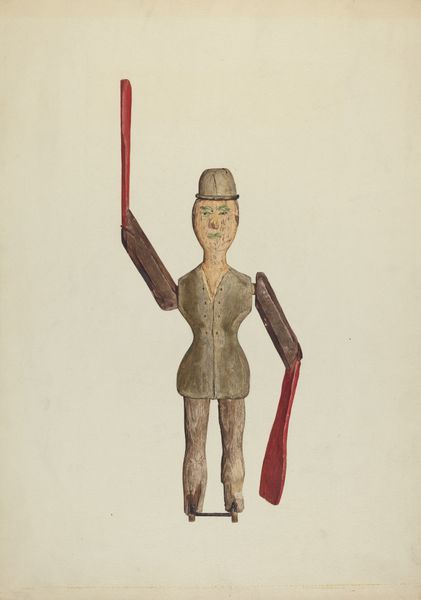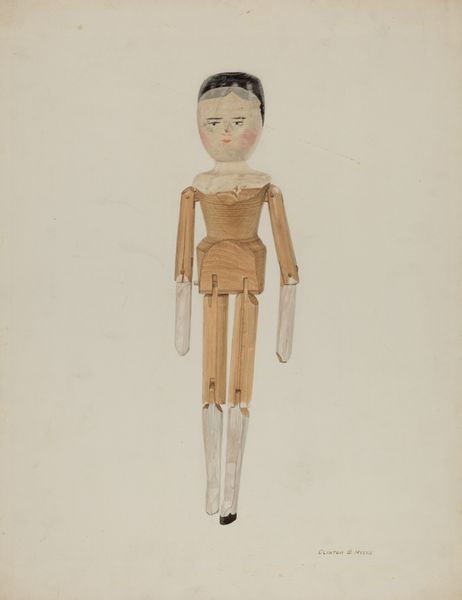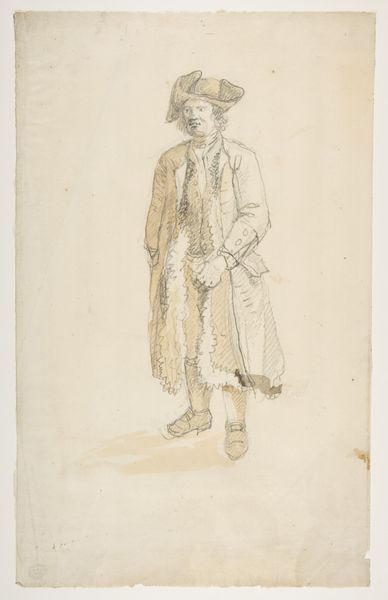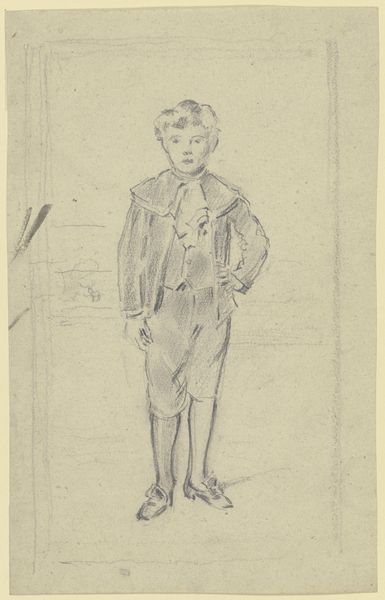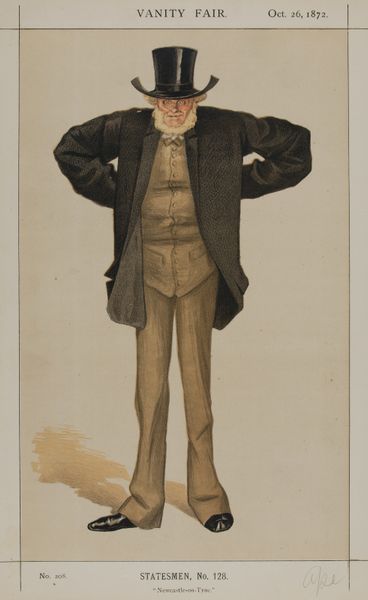
drawing, coloured-pencil
#
portrait
#
pencil drawn
#
drawing
#
coloured-pencil
#
pencil sketch
#
figuration
#
pencil drawing
#
coloured pencil
Dimensions: overall: 27.5 x 22.5 cm (10 13/16 x 8 7/8 in.) Original IAD Object: 6" long
Copyright: National Gallery of Art: CC0 1.0
Curator: This colored pencil drawing, titled "Rag Doll," was completed around 1936 by the artist Jane Iverson. It's an understated portrait of a simple object. Editor: The doll’s expression is strangely haunting, almost melancholic, and the colors, though muted, suggest something from another era. It reminds me of lost innocence and maybe the passage of time, and its discontents. Curator: Yes, it certainly encapsulates a bygone era. I think one of the compelling things about Jane Iverson’s practice is the way she often depicted ordinary subjects like toys. Dolls like these were products of a specific domestic economy – either mass-produced or made at home, playing a role in shaping children’s understanding of social roles and familial structures. Editor: Definitely, the image carries many socio-political resonances that are rooted in a historical understanding of gender, race, and identity. Note also how the drawing appears vulnerable, sketched without embellishments. The fact that it’s "just" a simple rag doll, portrayed during this interwar period makes me reflect upon social inequality and class. Does the artist’s background shed more light on why she chose to create such portrait? Curator: The biographical background I have available suggests Iverson actively participated in social movements advocating for equality. Her drawings often focused on representing objects used by the lower classes as a subtle form of commentary. By focusing on this singular doll she's diverting from standard forms of bourgeois portraiture and signaling other things entirely. Editor: Exactly! She highlights objects as subjects worthy of reflection. Also the doll, in its tailored attire, raises all sort of questions on the relationship between individual identity, childhood, and constructed sartorial elegance! It brings up topics like representation, societal roles. Is the ragdoll really ‘rag’? What kind of class does its suit signal? Curator: Precisely. A seemingly innocent image opens up all sorts of questions about culture and representation. Iverson understood the power of everyday objects as conduits for complex socio-political meanings. Editor: This work really urges us to consider the stories embedded in simple artifacts, the ideologies subtly imprinted on even a child's toy. Curator: Absolutely, "Rag Doll" transcends its humble subject to offer a lens through which we can consider broader issues of society, childhood, and identity.
Comments
No comments
Be the first to comment and join the conversation on the ultimate creative platform.
